How to Support Pollinators in NYC
Pollinators, from bees to butterflies, not only bring life to our gardens but also help grow food as well as New York City's plant biodiversity which is essential in supporting the health of our ecosystems and wildlife. However, pollinators are at risk due to climate change, habitat loss, and competition for resources from non-native species. Together with our partners and friends we are creating havens for pollinators in our parks — meet some of our pollinators, take a look at how we're supporting them, and learn how you can help pollinators thrive in your neighborhood:
Grow a pollinator garden
There are many ways to grow a haven for pollinators — you can start a garden in your street tree bed, community garden, window sill, or backyard.
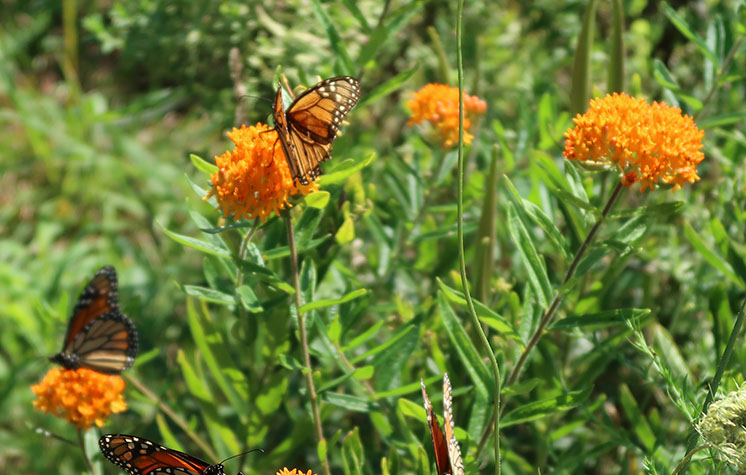
To provide pollen and nectar for pollinators, select several native plant species that flower at various times, so that you have plants flowering throughout the growing season. Select plants with different bloom sizes, shapes, and colors, as well as varying heights and growth habits. It is also important to include larval host plants for the caterpillars of butterflies and moths. Leaves are the primary source of caterpillar food, whereas butterflies need nectar sources.
Avoid cultivars that have been bred for features such as color or petal size; these plants may be incompatible with the insects that evolved to eat them. Be sure to include native grasses along with wildflowers. To learn more about native plants, check out our Native Species Planting Guide of New York City.
Create nesting habitats
All insects need undisturbed habitat for reproduction and winter hibernation. They make use of bunch grasses, leaf litter, bare ground, pithy (soft or spongy) stems, thick piles of dead brush, rock piles, or decomposing logs, stumps, and snags (dead or dying trees) for overwinter survival, egg-laying, and pupation.
Leave the leaves and dead wood
The leaf litter, especially in the fall, is a refuge for many insects.
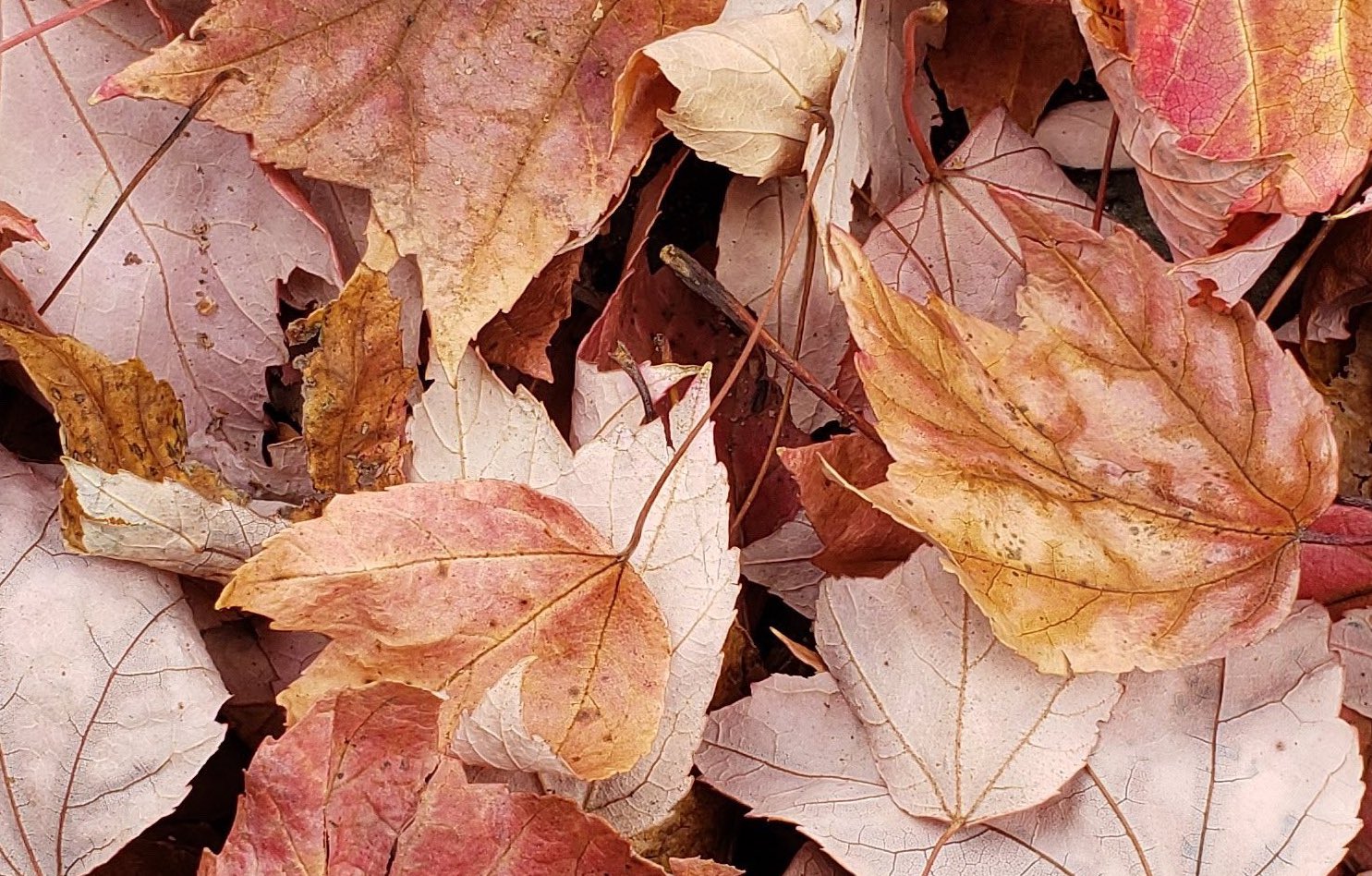
Tolerate some dead wood and leave a few untidy corners with leaf litter. By managing habitat for bees and butterflies, you will meet most of the overwintering and egg-laying needs of flies and beetles, and the nutritional needs of their larvae.
Cut back perennials in late spring
Twig nesting bees nest in pithy stems of perennials such as bee balm, sunflower, black-eyed Susan, penstemon, coneflower, goldenrod, and asters, as well as woody plants such as elderberry, and sumac. You can help ensure their survival by refraining from cutting these down in the fall, and instead cutting them back in the late spring but leaving 15 to 18 inches of stem.
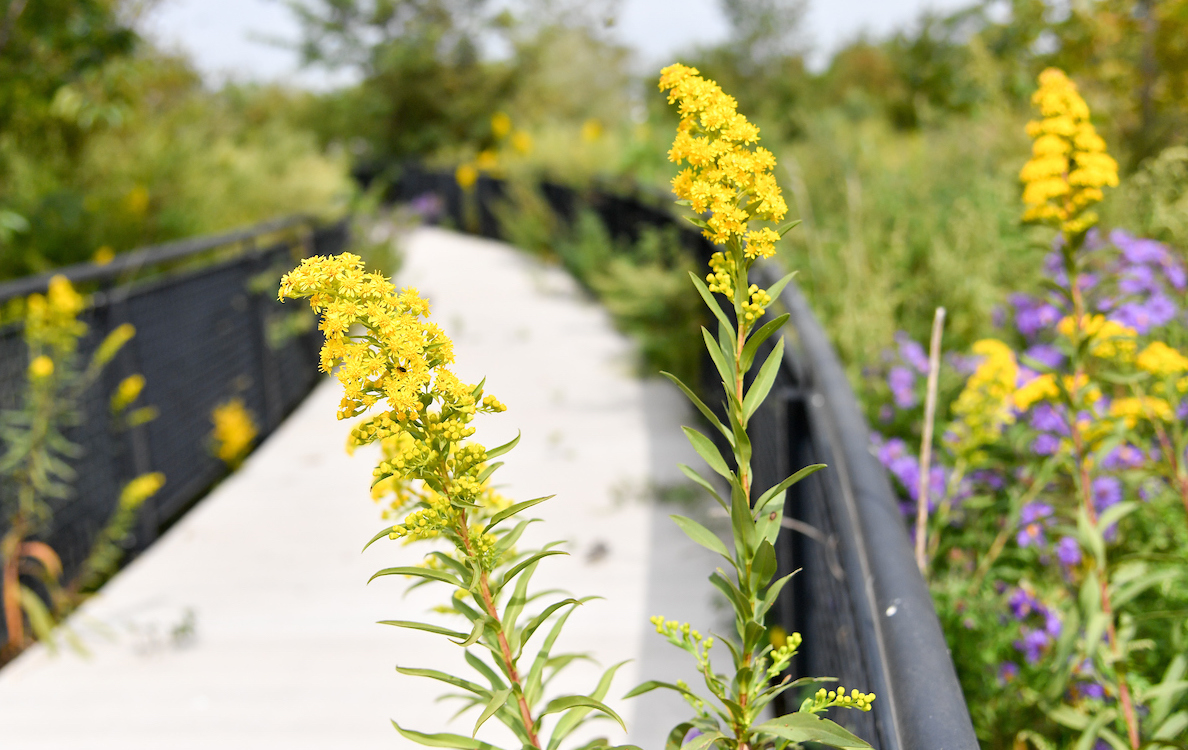
The clumping base of native perennial bunch grasses provide shelter and overwintering sites for butterfly life stages as well as shelter and nesting areas for bumble bees and other beneficial insects, such as beetles. Let the grass grow tall and fall over in naturalistic clumps.
Use pesticides sparingly
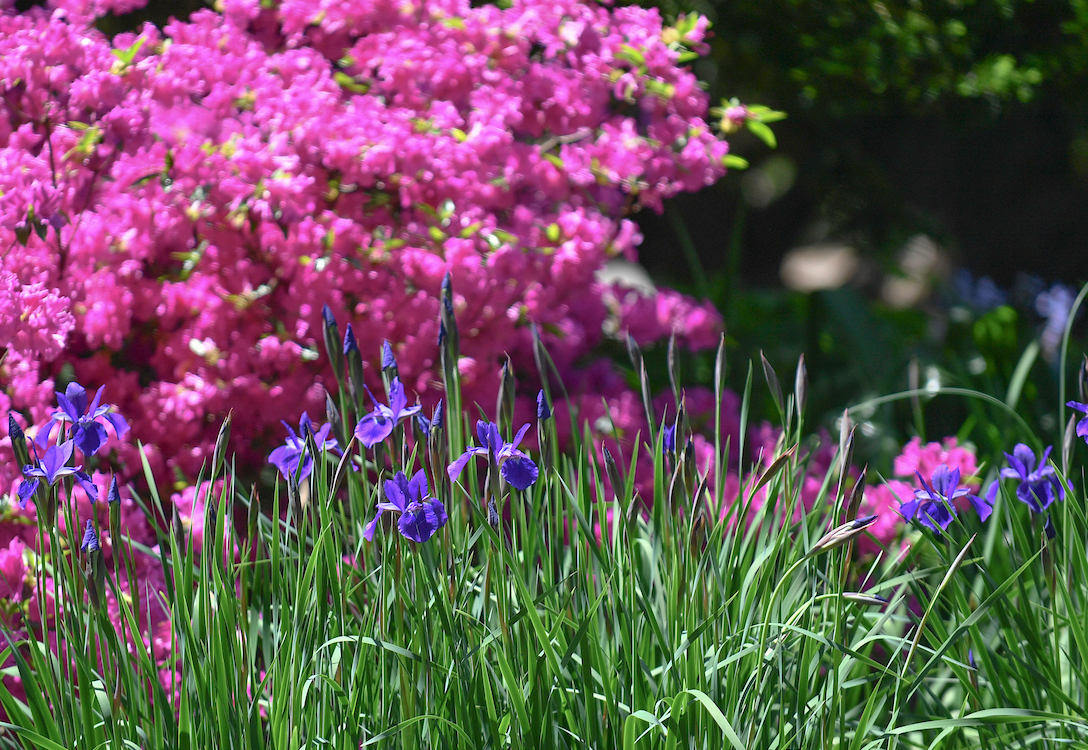
Remember that pesticides that kill non-target species can harm pollinators and other insects in your gardens, terraces, and window boxes, so be judicious with their use and try to develop a higher tolerance threshold for pests (aphids aren't so bad!).
Volunteer at an NYC Parks Stewardship event
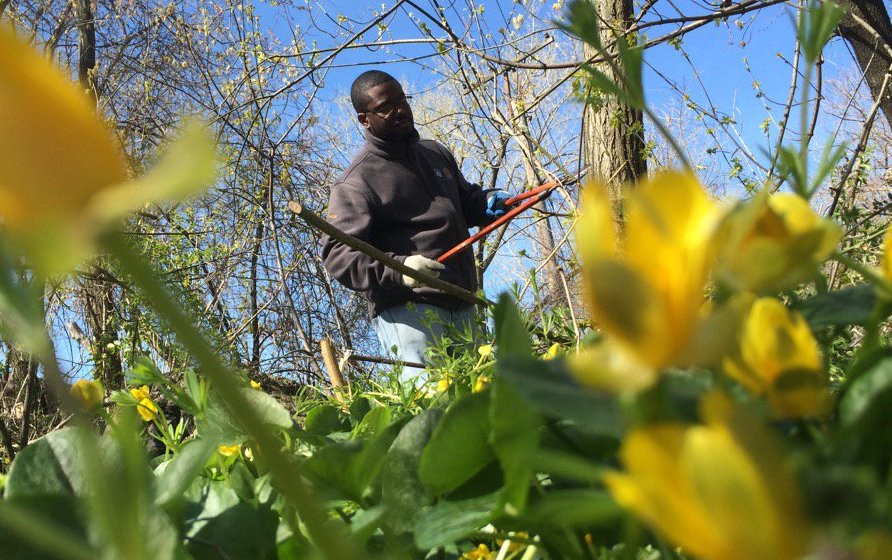
Help remove invasive plants at your local park in order to restore habitat for native pollinators. Join a Stewardship event
